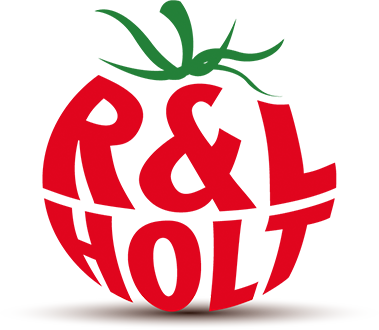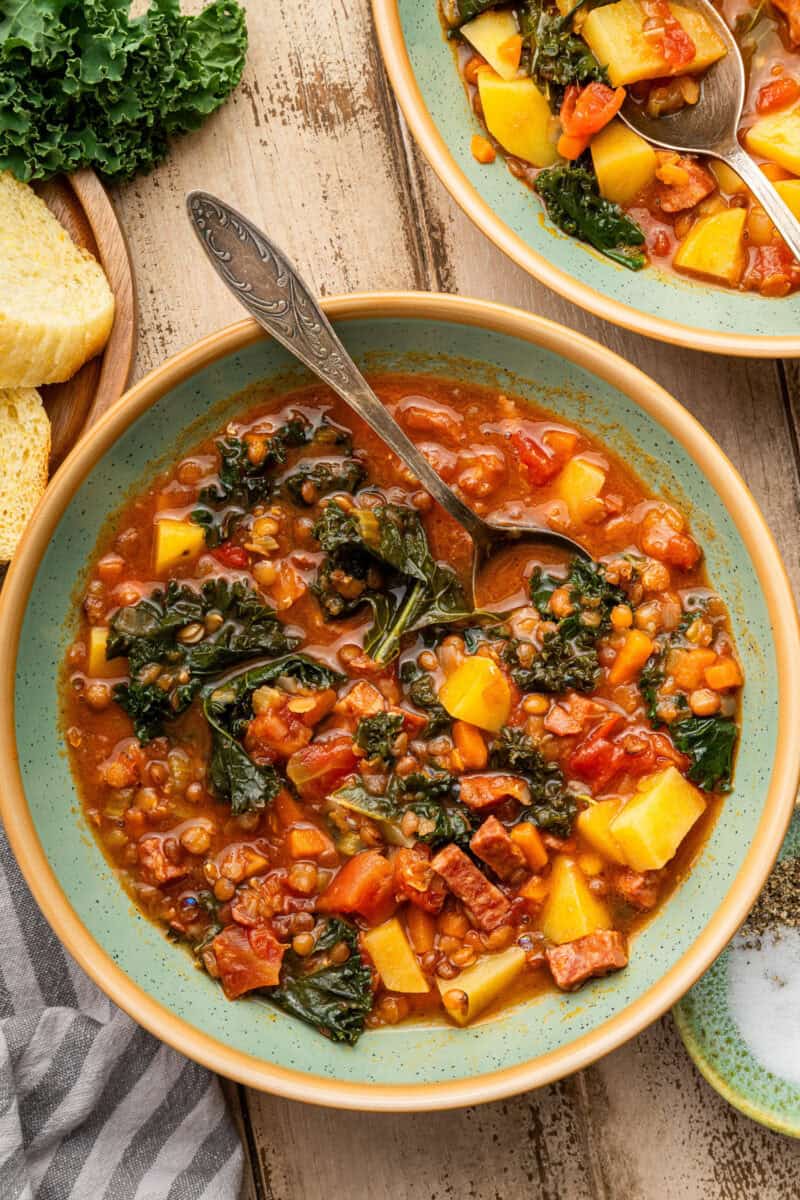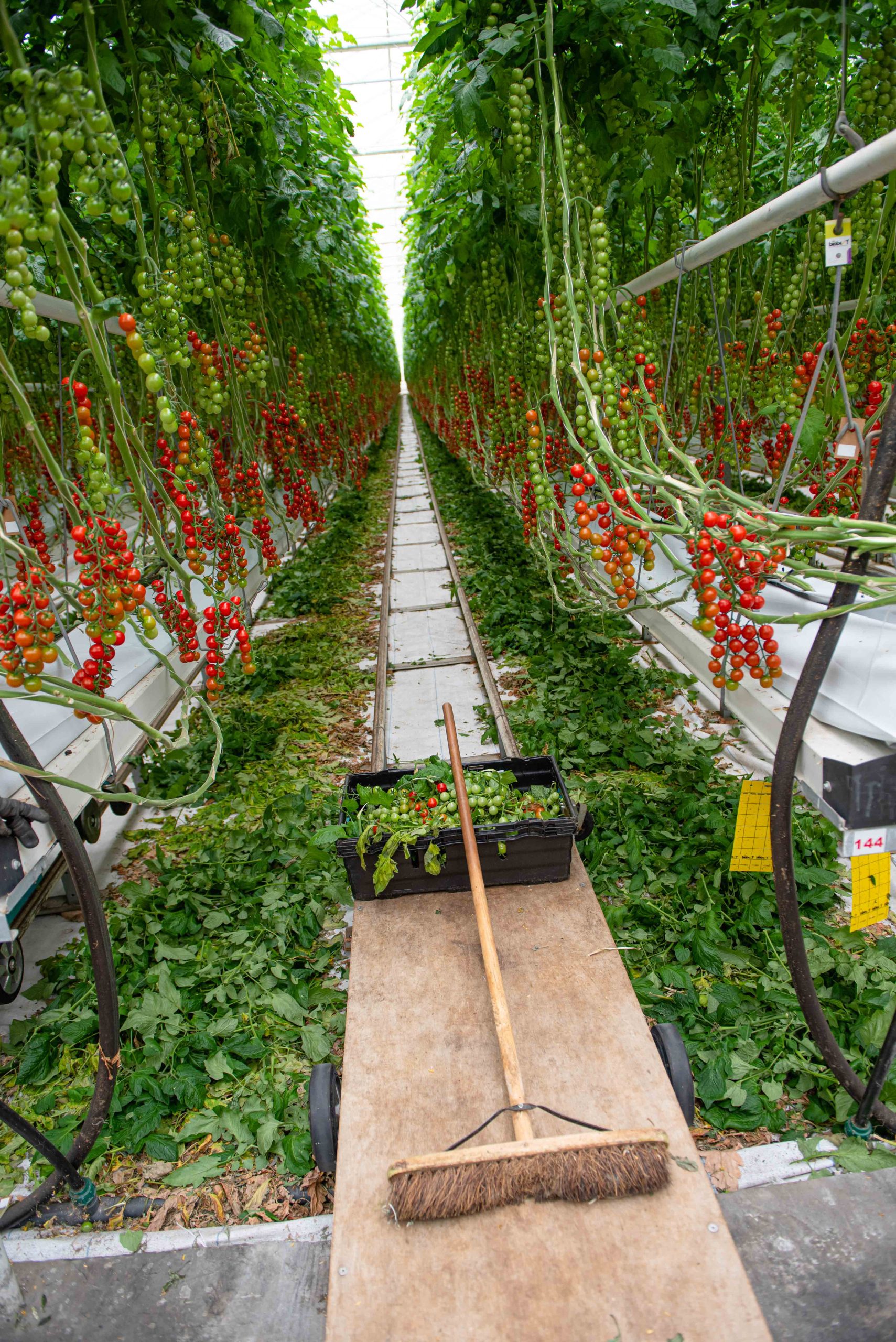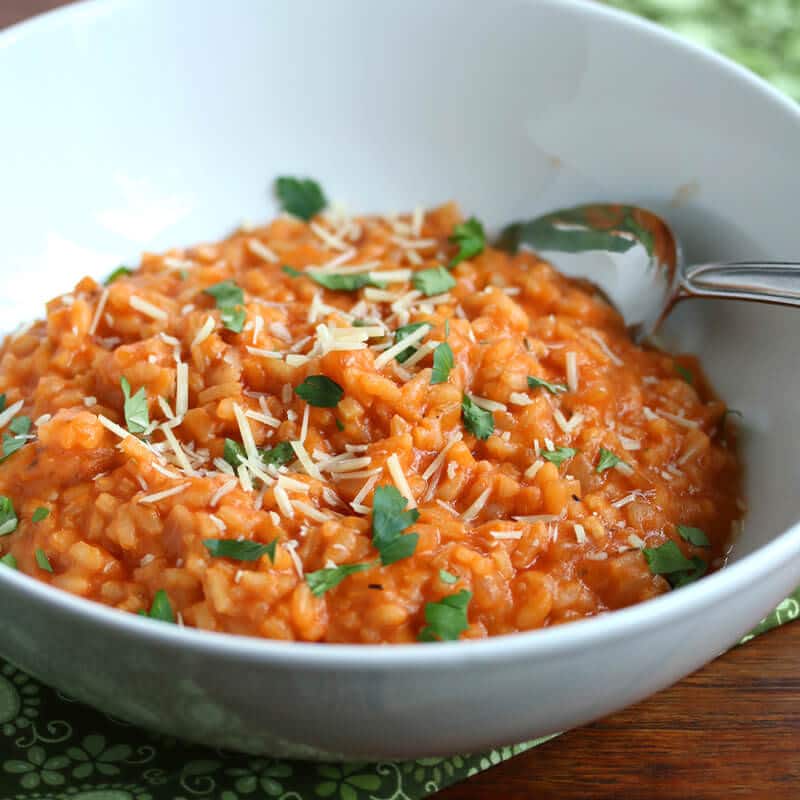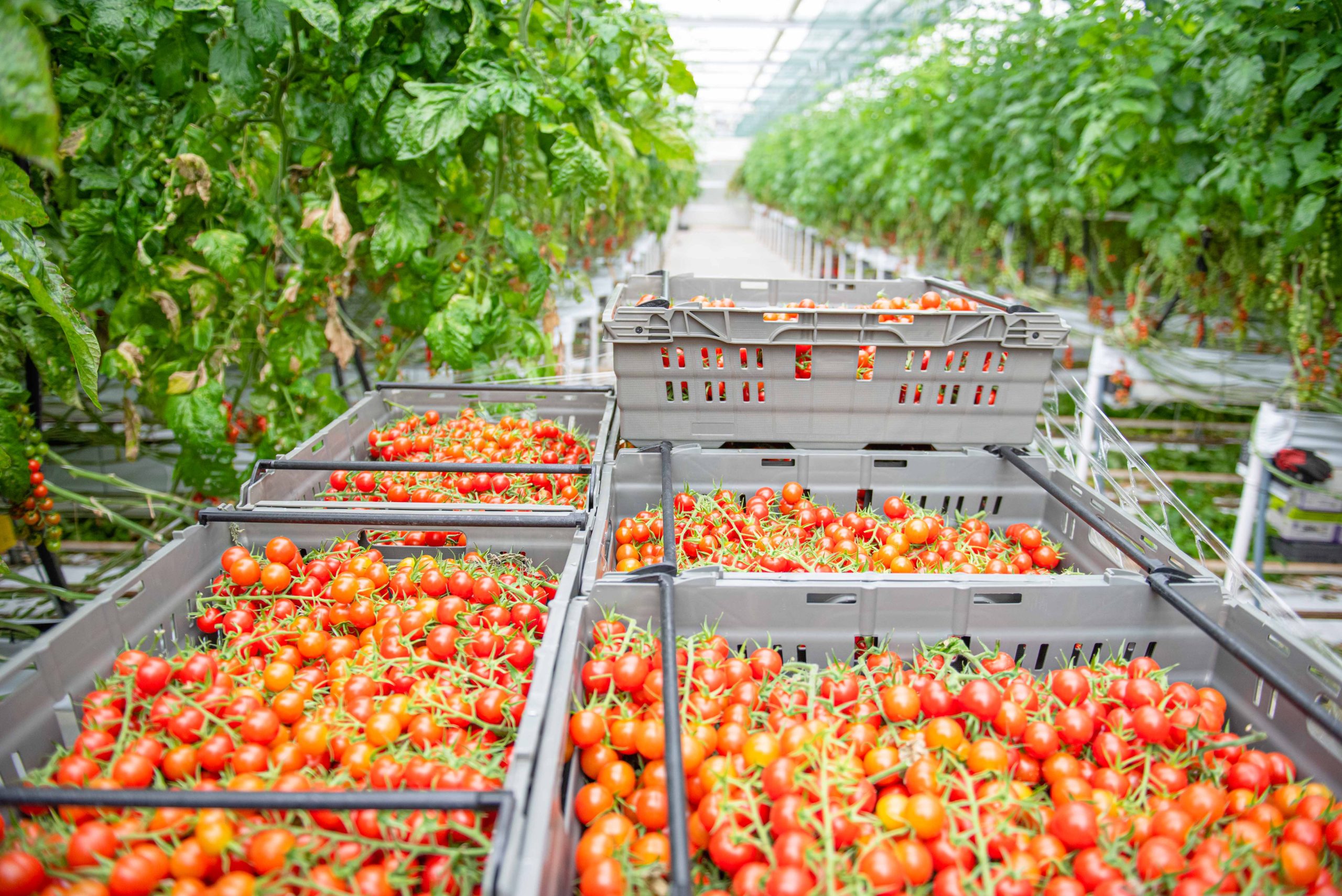Looking for a recipe that’s rustic, comforting, and perfect for cooler weather? This Smoky Tomato & Lentil Stew with Kale is a hearty, budget-friendly, and naturally vegan meal for the colder months!
Ingredients
- 2 tbsp olive oil
- 1 onion, finely chopped
- 2 carrots, diced
- 2 celery sticks, diced
- 3 cloves garlic, minced
- 1 tsp smoked paprika
- 1 tsp ground cumin
- ½ tsp chili flakes (optional, for heat)
- 2 tbsp tomato purée
- 1 x 400g tin chopped tomatoes
- 150g dried red or green lentils (rinsed)
- 750ml vegetable stock (hot)
- 1 bay leaf
- 1 tsp balsamic vinegar
- 2 handfuls kale or cavolo nero, chopped
- Salt and black pepper, to taste
- Fresh parsley or thyme leaves, for garnish
Method
Step 1 – Sauté the base. Heat olive oil in a large saucepan or casserole dish over medium heat. Add onion, carrot, and celery. Cook for 8–10 minutes until softened and starting to caramelize.
Step 2 – Add garlic and spices. Stir in garlic, smoked paprika, cumin, and chili flakes. Cook for 1 minute until fragrant.
Step 3 – Build the tomato base. Add tomato purée and cook for 2 minutes to deepen the flavour. Stir in the chopped tomatoes, lentils, and bay leaf.
Step 4 – Simmer and pour in the hot vegetable stock and stir well. Bring to a boil, then reduce to a gentle simmer. Cook uncovered for 25–30 minutes, stirring occasionally, until the lentils are tender and the stew is thick.
Step 5 – Finish and season. Stir in the balsamic vinegar and kale. Cook for another 5 minutes, until the kale is wilted. Season generously with salt and black pepper.
Step 6 – Serve and spoon into warm bowls, drizzle with olive oil, and scatter with fresh herbs. Serve with crusty bread or a baked potato for a complete meal.
